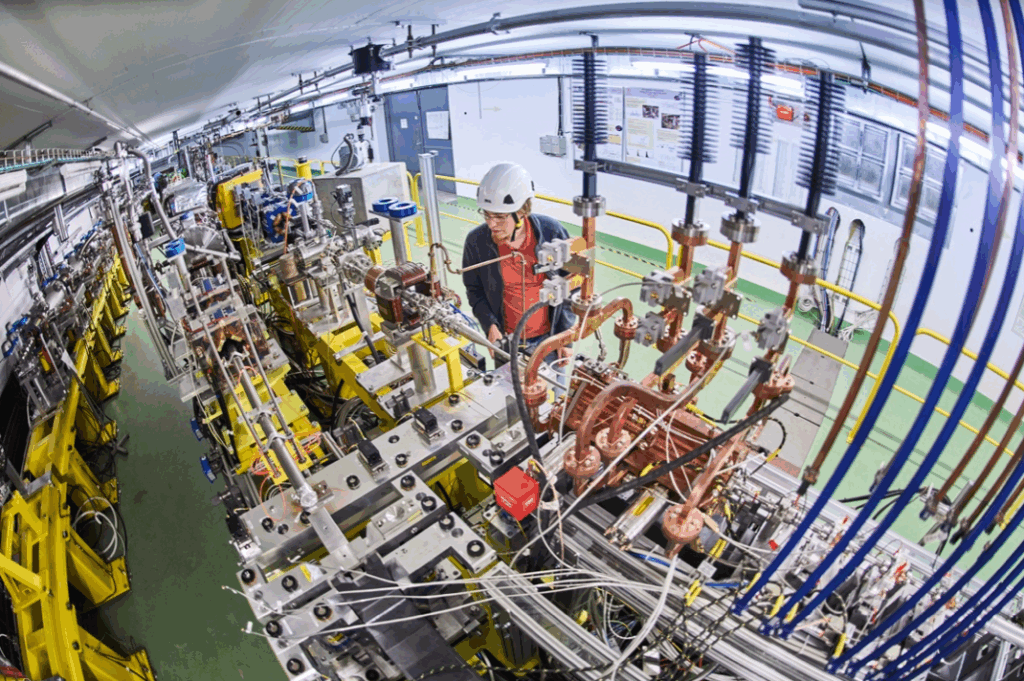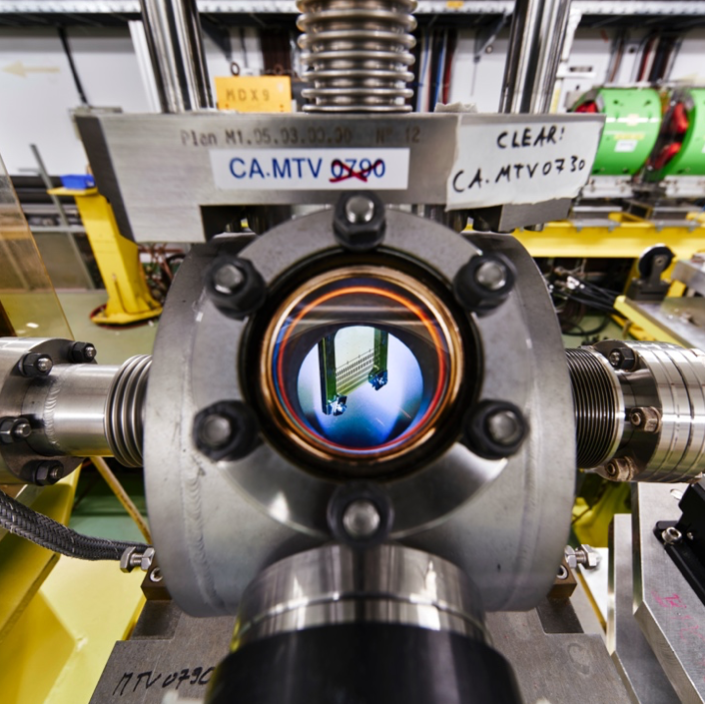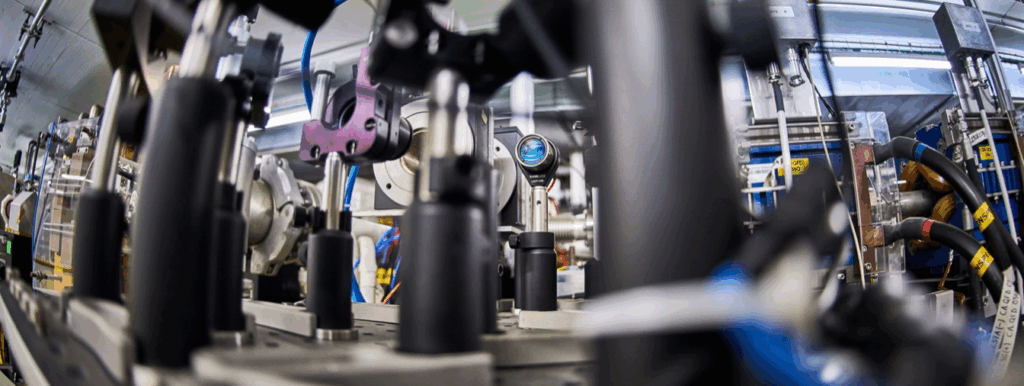CERN’s CLEAR Facility Extends Its Mission with Five New Years of Research
A Versatile Accelerator Platform for Science and Society
By: Pierre Korysko & Amedeo Habsburg
In the vast maze of CERN’s accelerator complex, it is easy to get lost among the countless LINACs, synchrotrons, and beamlines. Recently, however, one facility deserves the spotlight with the success of its past five years of research and a newly granted extension. Nestled within CERN’s Meyrin site, the CERN Linear Electron Accelerator for Research (CLEAR) is a vital facility, delivering beams of electrons not only for high-energy physics R&D but also for societal applications such as medicine. With its important activities in beam diagnostics, medical FLASH radiotherapy studies, dosimetry, radiation testing and machine learning, CLEAR is set to expand on their great research for a 2nd five years, pushing accelerator and societal impact to new frontiers.

CLEAR, a 20 meter long linear accelerator, began operations in 2017, growing out of the Compact Linear Collider Test Facility 3 (CTF3), which was decommissioned in 2016. By repurposing this infrastructure, CERN ensured that a highly adaptable electron beamline, accelerating particles up to 220 MeV, could continue serving a wide range of experimental users.
Unlike many accelerators that run to fixed programs, CLEAR was designed from the start as a multi-user, multi-purpose laboratory. Researchers can adjust the beam’s energy, charge, length, and repetition rate to match their modular experimental needs; whether testing new detector components or investigating medical dose delivery.
Over the past 5 years, CLEAR’s experimental program has been remarkably broad. It supports:
– Accelerator development: testing high-gradient acceleration, plasma lens concepts, and THz-based acceleration, crucial for the next generation of colliders such as CLIC and FCC-ee.
– Radiation studies: working with the European Space Agency (ESA) and CERN’s R2E group to test the resilience of electronics in radiation-heavy environments.
– Medical applications: exploring the use of very high energy electrons (VHEE) for deep-tissue cancer treatment, including pioneering studies on FLASH radiotherapy, which delivers ultra-fast doses that appear to spare healthy tissue.
Among CLEAR’s most significant contributions are its studies on FLASH radiotherapy in collaboration with Geneva University Hospital. Early experiments with zebrafish embryos have shown that the therapeutic FLASH effect depends on instantaneous dose rate, not on average dose rate; a finding that could simplify future medical technologies. Similarly, its irradiation campaigns with ESA have provided vital data for spacecraft electronics, ensuring that satellites and deep-space missions can withstand the harsh radiation of space.

Over 35 beam-time requests were received in 2025 for experiments at CLEAR. 2024/2025 was the period of several new collaborations related to medical applications, including the University Hospital of Geneva, the Institut Gustave Roussy, Sapienza University of Rome, the University of Strathclyde, École Polytechnique, the Laboratoire D’Optique Appliquée, the University of Munich, and the University of the West of Scotland.
Beyond research, CLEAR has been used to train the next generation of scientists and engineers. In recent years, students from the Joint University Accelerator School (JUAS), the CERN Advanced Training School on Operation of Accelerators (ATSOA), and the CERN Solvay Camps have spent time in the CLEAR control room to learn about the physics and engineering behind an electron accelerator.

It is clear that the facility has had an influential impact over the past five years. Now, as its mandate comes to an end, the success of its work has justified an extension for an additional five years. Confirmed by the CERN Council and included in the Mid-Term Plan (MTP), CLEAR will now run until 2030.
To accommodate the growing number of beam requests, a new beamline is being built within the CLEAR bunker. Branching off from the existing beamline via a dogleg chicane which can be used for bunch compression, the new beamline will feature two additional test areas: one in vacuum and one in air. The beamline will utilise large-aperture quadrupoles, enabling the irradiation of large target areas or precise focusing of beams onto a target.
This expansion will not only increase the variety of beam parameters CLEAR can provide to users but also create more space for multiple experiments to be conducted simultaneously, both in air and in vacuum. In addition, most of the hardware for the new beamline was taken from the decommissioned Delay Loop and Combiner Ring machine, which was part of the CTF3 complex.
This hardware will then be used to support the next line of experiments. For the first two years, as one of the only accelerators operating during SL3, experiments will build on research areas where the CLEAR facility has strong expertise:
– Deeper investigations of very high-energy electron beams, including dosimetry and FLASH radiotherapy.
– Developing and testing instruments and components for existing and future accelerators, such as the Future Circular Collider e+/e− and the Compact Linear Collider.
– Further testing novel concepts such as plasma lenses and THz acceleration.
– Further studies on the radiation hardness of electronics for aerospace and high-energy applications.
– Training the next generation of accelerator physicists, including, in 2026, the winning teams from the CERN Beamline for Schools competition.
The CLEAR facility thereafter has a broad range of possibilities. Experiments from users may continue, addressing research demand in medical, beam instrumentation, and dosimetry domains. Alternatively, CLEAR can serve as a testbed for tools and techniques to characterize beam properties in next-generation accelerator injectors (FCC-ee, LEP3, ILC).

In conclusion, CLEAR is well positioned to continue as a flexible, high-impact facility for beam-based R&D in the coming years, bringing advancements not only in accelerator physics, but, importantly, impact in several important fields in space, and medicine.
